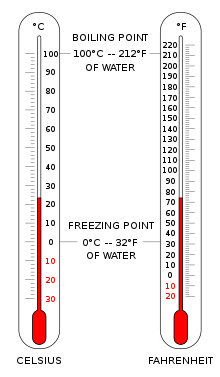显热
显热是指物体或热力学系统中造成温度改变的热量交换;这种热交换会改变物体或系统的某些宏观变量,但物体或系统的其它宏观变量保持不变,例如体积或压力。 [1] [2] [3] [4]
用法[编辑]

显热与潜热相反,潜热是隐藏的热交换量,也就是在不改变温度的情况下发生。例如,在冰融化成水的相变期间,系统的温度恒定,直到所有冰融化为止。
热力学过程中的显热可以计算为物体质量( m )与比热容( c )和温度变化()的乘积。
显热和潜热不是特殊的能量形式。相反,它们描述了在根据其对材料或热力学系统的影响而指定的条件下进行的热交换。
早期研究热力学的科学家的著作中,显热由量热法明确定义。詹姆斯·普雷斯科特·焦耳(James Prescott Joule)于1847年将其描述为温度计指示的能量。 [5]
在自然界中传输能量时,在许多过程中都观察到了感热和潜热。潜热与在恒定温度下测量的状态变化有关,尤其是大气中水蒸气的相变,主要是汽化和冷凝,而显热直接影响大气的温度。
参考资料[编辑]
- ^ Partington, J.R. (1949). An Advanced Treatise on Physical Chemistry, Volume 1, Fundamental Principles. The Properties of Gases, Longmans, Green, and Co., London, pages 155-157.
- ^ Prigogine, I., Defay, R. (1950/1954). Chemical Thermodynamics, Longmans, Green & Co, London, pages 22-23.
- ^ Adkins, C.J. (1975). Equilibrium Thermodynamics, second edition, McGraw-Hill, London, ISBN 0-07-084057-1, Section 3.6, pages 43-46.
- ^ Landsberg, P.T. (1978). Thermodynamics and Statistical Mechanics, Oxford University Press, Oxford, ISBN 0-19-851142-6, page 11.
- ^ J. P. Joule, The Scientific Paper of James Prescott Joule, The Physical Society of London: 274, 1884,
I am inclined to believe that both of these hypotheses will be found to hold good,—that in some instances, particularly in the case of sensible heat, or such as is indicated by the thermometer, heat will be found to consist in the living force of the particles of the bodies in which it is induced;
, Lecture on Matter, Living Force, and Heat. May 5 and 12, 1847
| ||||||||||||||||||||||||||||||||||||||||||


